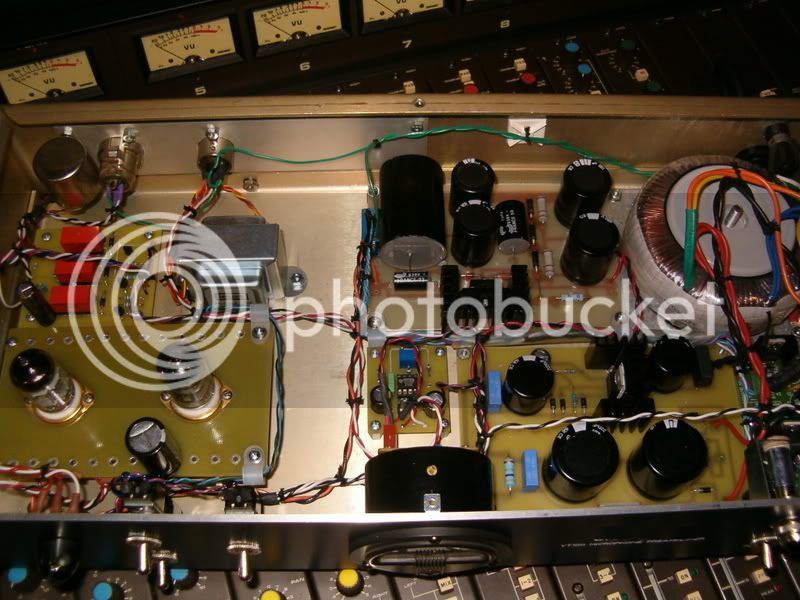deveng
Well-known member
Gents,
Here's something I've been working on for a few months. It's working but still needs some massaging. First gain stage has more gain than necessary and it still suffers from a bit of hum. Wiring still is not committed and may need some movement to clean audio up a bit. Tested with RMAA and it looks pretty good already. Frequency response is +/- 0.5 dB from 10Hz to 35kHz. Total gain is close to 60dB. The tube circuit is nothing spectacular or new. Basically a simple 2 stage 12ax7 feeding a 12bh7 follower. Jensen JT115k input transformer and a Jensen JT10k61 output transformer wired series at 4:1. Distortion is max 0.3% at full gain and just under 0.2% at lower gains. I'd like to drop these numbers if I can with this amount of gain in 2 stages and the topology used. IMD is higher than I'd like as well but I'll check on this after I lower the overall gain and clean up the hum issue. It's a MosFET/zener regulated B+ at 275v, regulated 12v filament, buffered VU (see "VU meter buffer" thread). The relays are setup for phase, 20dB pad and phantom.


regards,
Jeff
Here's something I've been working on for a few months. It's working but still needs some massaging. First gain stage has more gain than necessary and it still suffers from a bit of hum. Wiring still is not committed and may need some movement to clean audio up a bit. Tested with RMAA and it looks pretty good already. Frequency response is +/- 0.5 dB from 10Hz to 35kHz. Total gain is close to 60dB. The tube circuit is nothing spectacular or new. Basically a simple 2 stage 12ax7 feeding a 12bh7 follower. Jensen JT115k input transformer and a Jensen JT10k61 output transformer wired series at 4:1. Distortion is max 0.3% at full gain and just under 0.2% at lower gains. I'd like to drop these numbers if I can with this amount of gain in 2 stages and the topology used. IMD is higher than I'd like as well but I'll check on this after I lower the overall gain and clean up the hum issue. It's a MosFET/zener regulated B+ at 275v, regulated 12v filament, buffered VU (see "VU meter buffer" thread). The relays are setup for phase, 20dB pad and phantom.


regards,
Jeff


